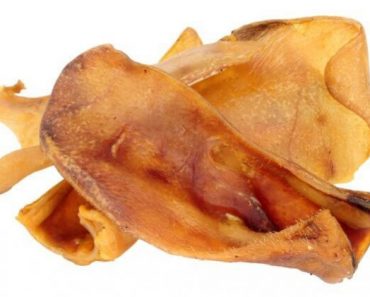Snakes — just the thought of them slithering around freaks me out! Since my two dogs and I enjoy heading outdoors for long nature walks, we’ve spotted quite a few wiggling in the grass and wandering along the hiking trails. While they may frighten many of us humans, they typically intrigue our canine kids. Not knowing what the heck they are, dogs may feel inclined to walk over, lean in, and start sniffing. And I’m pretty sure you know what happens next.
Read on to find out all about snake bites in dogs — the times of year you should be on heightened alert, the common areas snakes attack, and what to do if your dog gets bitten.
When You Should Be On The Lookout For Snakes
This is going to vary slightly depending on the weather in your particular location, but, in general, snakes are commonly found slithering around during the warmer months — spring, summer, and early fall.
According to Snakeprotection.com, venomous snakes in North America — such as rattlesnakes, copperheads, and cottonmouths — go into hibernation when the weather cools down, which could be as early as September or as late as December. Although, if you live in the warmer, southern states then the snakes in your area may not go into hibernation at all. Rather, they may go into something called brumation, which means they don’t actually fall into a deep sleep. In brumation, a snake’s metabolism will slow down they will become less active, meaning they’re less likely to feed.
Summary: Pet parents should be on the lookout for snakes when the average daytime temperatures reach and remain about 60º or higher.

The Most Common Places Dogs Get Bitten
- Your backyard
- Parks
- Hiking trails
- Riverbeds
- Pools
- Brush
- Shrubs
- Flower beds and gardens

Warning Signs and Symptoms
While the symptoms will vary depending on the type of snake and toxicity of its venom, here are a few common warning signs and symptoms to watch for:
- Sudden yelp, signaling pain
- Swelling
- Bleeding
- Fang/puncture marks
- Shortness of breath
- Weakness
- Drop in blood pressure
- Collapse
What To Do If Your Dog Is Bitten By A Snake
Thankfully, most snakes in the U.S. aren’t poisonous. However, even non-venomous snakebites can be dangerous to your pooch. And since it’s hard to know if your canine companion was bitten by a venomous or non-venomous snake, it’s important to seek professional medical attention from your vet immediately.
Veterinarians advise pet parents not to attempt any home remedies. Don’t apply a tourniquet or ice pack and don’t attempt to suck out the venom. Simply stay calm and get to your vet ASAP. On your way there, try to keep the dog as still as possible since movement can help spread the venom around your pup’s body. Also, position the bitten area below your dog’s heart level.

Tips To Avoid Snake Bites
- The first thing I recommend doing is getting familiar with the types of snakes in your area. Find out what they look like, when they’re usually out and about, and where they like to hide.
- Always make sure to keep your dog on a leash during peak snake season — even if you’re just in your backyard. One of the most common areas that dogs get bitten is right in their own backyard since most pet parents feel comfortable letting their pooch run around off-leash and not tracking every single movement. But you never know if a snake is slithering in your grass!
- Keep your grass short, lawn manicured (by patching any holes), and trees and shrubs pruned. This gives snakes fewer places to hide!
- Leaf piles, mulch, pine straw, and brush are all great hiding places for snakes. So, clear any unnecessary piles of debris from your outdoor areas!
- Snakes commonly make woodpiles their home. They offer numerous hiding places to stay cool, dry, and out-of-sight. Plus, you can compare large wood piles to outdoor eateries for snakes since little critters like mice, rats, and squirrels like to hang out there as well. If you must have a woodpile, keep it away from your house and stack it at least a foot off the ground.
- Snakes love rock piles. They too offer unlimited hiding spots, temperature regulation, and a mini menu of food options (AKA small critters and bugs).
- Be sure to protect any openings that lead into your home through the outside walls or roof, such as outdoor fireplace or dryer vents, exhausts systems, or heat/air conditioner units. These are common ports of entry for snakes and other critters.
- Keep your garage door closed. Snakes love to set-up home in a garage or outdoor shed where the food supply from critters and insects are often plentiful.
- If you’re walking with your dog and happen to see a snake slithering by then turn around immediately and walk the other way. Don’t take the chance and walk passed it since snakes are known to strike across a distance equal to about half their body length. They can also strike in the blink of an eye.








